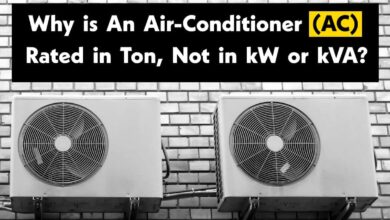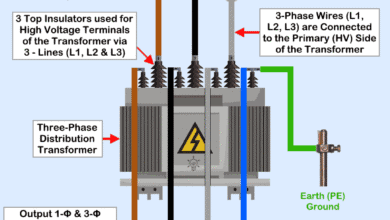Difference Between a Transformer and an Induction Motor
An Induction Motor is fundamentally a Transformer – What is the Difference?
The induction motor is fundamentally a transformer in which the stator is the primary and the rotor is short circuited secondary. This is evident, particularly then the rotor is stationary. The rotor current establishes a flux which opposes and, therefore, tends to weaken the stator flux. This causes more current to flow in the stator winding just as increase in secondary current in a transformer causes a corresponding increase in primary current. Very often the analysis of an induction motor is made on the same lines as the transformer with the modification that short circuited secondary is considering rotating.
Note that the working principle of both transformer and Induction motor is same i.e. Faraday law’s of electromagnetic induction or mutual induction.
So what is the difference between a transformer and an induction motor while the operation of principle is same for both machines?
Difference between Induction Motor and Transformer
- A Transformer is a static device, whereas motor is a dynastic machine contains on moving parts.
- A transformer transfers electrical power from one circuit to another without changing the supply frequency, i.e. it only step-up or step-down the level of voltage and current, whereas induction motor converts electrical power into mechanical power.
- In a transformer, the frequency of induced EMF and current in the secondary is same as supply frequency, i.e. primary and secondary frequency is constant while in an induction motor, the frequency of current and EMF on stator remains same, whereas the frequency of the rotor is variable which depends on slip and slip is further depends on motor loads. The frequency of induced EMF on the rotor is equal to slip times the stator frequency.
- In a transformer, both the input and output energy (primary and secondary) is in the form of electrical energy, whereas in motor, the supply energy in the rotor is in electrical form and the stator energy converted to the mechanical form of energy.
- A transformer is an alternating flux machine while induction motor is a rotating flux machine.
- In a transformer, mostly a ferromagnetic iron core is used as a medium for the passage of flux from primary to secondary, whereas in an induction motor, the air gap is used between rotor and stator.
- A transformer can be operated at any kind of power factor depends on load while induction motor operated on lagging power factor because it draws lagging current to magnetize the rotor filed at starting and operating due to air gap.
- A transformer efficiency is always higher than the induction motor efficiency because there is no moving parts in a transformer, whereas mechanical losses occurs in an induction motor as it is not static machine like a transformer.
Related Posts:
- Difference Between Single Phase & Three Phase Induction Motor
- Difference Between Active and Reactive Power
- Difference between Analog and Digital Multimeter
- Difference Between Capacitor and Supercapacitor
- Main Difference between Contactor and Starter
- Difference Between a Battery and a Capacitor







